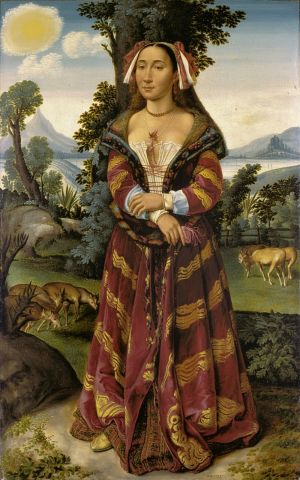Isari
| Isari | |
|---|---|
| Image |  |
| Plural | Isari |
| Spirit Origin | Ilvaren |
| Classification | Human |
| Homeland | Harani |
| Average Height | 6-7 ft |
| Average Lifespan | 80-95 Years |
| Distinction | Refined cultural preservation, ritual inwardness, social isolationism |
| Language | Haranic |
Introduction
The Isari are a tall, human-descended people native to the isolated Isles of Harani, located off the western coast of Orethil. Known for their cultural inwardness and deep preservationist traditions, the Isari developed over tens of thousands of years apart from the mainland realms. Their society is structured around inherited forms, ritual aesthetics, and an enduring belief in the sanctity of contained memory. Though they maintain limited diplomatic and trade contact, the Isari are broadly regarded as distant and self-contained, rarely participating in the broader political or spiritual affairs of Orethil.
Spiritually, the Isari are aligned with the Ascendant Spirit Ilvaren, a veiled presence associated with Culture and Alienation. Through Ilvaren’s influence, the Isari regard isolation not as a defect, but as a condition for the purity of meaning and the continuity of tradition. They place high importance on the controlled transmission of knowledge, the preservation of ancestral forms, and the quiet endurance of identity without outward validation.
Origin and Nature
The Isari trace their origins to the early phases of the Great Migration, when groups of trueborn humans crossed the western ocean and settled in the fertile island chain later known as the Isles of Harani. Cut off from the mainland for tens of millennia, these early settlers adapted to the region’s temperate climate and abundant resources while developing a social structure increasingly oriented around stability, refinement, and the formalization of memory.
Unlike other human-descended cultures that diversified through exploration or elemental integration, the Isari turned inward. Influenced by the spiritual presence of **Ilvaren**, the Ascendant Spirit of Culture and Alienation, they came to view isolation as a protective condition—one that enabled the preservation of unaltered custom and intentional form. This orientation shaped every aspect of their development: from architecture and inheritance to rites of speech, mourning, and movement.
Physiologically, the Isari differ subtly from other human lineages. They are notably tall, ranging from six to seven feet in height, with elongated limbs and narrow bone structures. These traits are thought to have developed in response to both environmental factors and generational inward focus, reinforcing a visual impression of grace and physical restraint.
Biology and Physical Traits
The Isari are notably tall by human standards, with average adult heights ranging from six to seven feet. Their physiques are lean, with elongated limbs, narrow shoulders, and fine-boned facial structures. Skin tones are darker bronze, with minimal variation across population groups. Hair is typically dark and straight, though aging commonly results in a muted silver-gray rather than white. Eye color is often subdued—shades of grey, amber, or muted green are most common.
While outwardly similar to other human lineages, the Isari exhibit certain physiological traits that reflect long-term environmental and cultural adaptation. Their respiratory and circulatory systems are finely tuned for temperate coastal climates, and they display a low tolerance for extremes in humidity or elevation. Musculature tends toward endurance and posture alignment rather than brute strength, mirroring their cultural emphasis on control and balance.
Isari movement is generally precise and deliberate, and posture is culturally reinforced from an early age. Their vocal tone is naturally soft but resonant, with spoken language often accompanied by intentional pauses and stillness. Though not innately longer-lived than other humans, Isari lifespans typically extend between 80 and 95 years, supported by diet, structured daily life, and limited environmental stressors.
Culture and Society
Isari society is shaped by an enduring philosophy of preservation, refinement, and inward continuity. Every aspect of daily life is guided by inherited form, from domestic layout and ritual posture to patterns of speech and symbolic ornamentation. Social deviation is not forbidden but is considered disruptive to the continuity of shared meaning.
Households are multi-generational and often organized around ancestral alcoves—chambers dedicated to the curated display of tokens, tools, and written fragments passed down through lineage. These are not monuments, but active spaces of quiet reference, used to guide decisions and behavior in the present. Public buildings reflect similar values: clean symmetry, reserved color palettes, and an emphasis on stillness and containment.
Civic life is structured but quiet. Leadership roles rotate cyclically among recognized lineages, and decisions are made through extended deliberation. Public speech is rare, and formal gatherings are infrequent. Most collective activity takes place through indirect action: shared tending of gardens, ritual maintenance of walkways, or communal silence during observance intervals.
Cultural transmission occurs through long apprenticeships, often beginning in adolescence and lasting into early adulthood. Innovation exists but is highly contextual—expressed through subtle variation within accepted forms rather than radical departure. Aesthetic expression, when permitted, emphasizes material honesty, spatial clarity, and symbolic compression.
The Isari do not practice open diplomacy, and while trade with other cultures exists, it is highly formalized and filtered through designated mediators. Outsiders are not excluded but are expected to adhere to specific boundaries of conduct, appearance, and interaction during their stay.